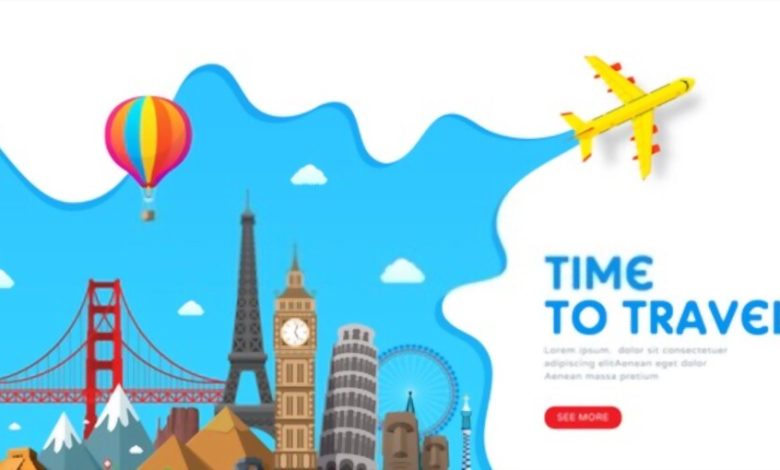How to Optimize Your Tourism Website to Get More Bookings?

As a tour and activity provider, you need to optimize your tourism website in order to get more bookings. The key to doing this is understanding your visitors and creating a better online experience that inspires them.
SEO for tourism is more important than ever before. By optimizing your website for search, you can bring in more qualified leads to your business and convert them into bookers.
1. Optimize Your Home Page
When a visitor arrives on your homepage, they should be able to find the information they need quickly and easily. It is therefore important to optimize your home page as part of a comprehensive SEO strategy.
A tourism website needs to be optimized so that it can appear in search engine results when potential customers type keywords into Google. Using SEO techniques will ensure that this happens and will also improve the user experience of your site, making it more likely to convert visitors into bookings.
The travel industry is highly competitive, so it is essential to have an effective digital marketing strategy in place. This can be achieved by implementing a number of different strategies.
One of the most effective strategies for a tourism business is to optimize your home page. Often called the front page, the homepage serves to orient visitors by providing titles, headlines, and images that demonstrate what your website is about.
Typical business websites often have the name and logo prominently displayed, with pictures of employees or products related to the firm. This makes it easier for people to understand what the company is all about and enables them to get in touch with the business.
2. Optimize Your Content
Content is the heart of your tourism website. It should be unique, relevant and up-to-date to keep your visitors engaged and answer any questions they might have. The best way to make your content stand out is through SEO techniques such as keyword placement, page titles and Meta descriptions.
Your content should also be easy to navigate, which means you should have a well-thought-out information flow and plenty of images to help your users get the information they need quickly and easily. Search engines rank sites based on the quality and quantity of their content, so optimizing your site for the right keywords can have a dramatic effect on your search ranking.
Creating good content will not only improve your ranking, but it will also improve user engagement and conversion rates. Using proper keyword density, a keyword-rich title tag, and a Meta description that describes your article in detail will give your content a boost in rankings.
Another important element of optimizing your content is making it mobile-friendly. Most travelers research and book their travel plans on mobile devices, so it’s important to have a responsive design that will display properly on all screen sizes.
Lastly, don’t forget to include social media sharing buttons on your website. Having a robust social media presence is one of the top SEO factors that Google uses to judge websites and determine their ranking. A strong social media presence will help your tourism business to rank higher in search results and increase the amount of traffic you receive from organic sources.
3. Optimize Your Images
Images play a huge role in the success of any website. They are a great way to convey information and present your product in an attractive manner. They also attract more visitors and improve search rankings.
While there are many ways to optimize your images, it is important to follow a few key steps to ensure the best possible performance. This will help your site load faster and rank higher in search results.
First, make sure your images are properly sized for the web and have an acceptable image quality. This is an easy step to take and will have a big impact on your site’s speed.
Next, compress your images using lossy or lossless compression to decrease their file size. You can either use a plugin or script to do this. Lossy compression will reduce the file size while still maintaining a high-quality image, while lossless will eliminate the need for the compression while still keeping the file size low.
Finally, you should make sure all of your images have correct titles and captions. These will give context to your image, and help search engines understand what the picture is about.
The average page load time is increasing globally, and visitors are more likely to click away if your website takes too long to load. Optimizing your images is a great way to speed up your site and keep your customers coming back for more!
4. Optimize Your Links
Optimizing your links is the single most important thing you can do for your tourism website. It’s a simple process that can have significant impacts on your search engine rankings.
Getting a link from an authority site is the first and most obvious step, but you should also consider adding external links to your site from social media. These links can be a great way to generate relevant traffic and increase your domain authority, so don’t forget to take advantage of this opportunity!
A good example of this would be a dedicated page for Mexico travel, as opposed to a general home page about your tours in the region. This will allow you to optimize the content on this page for specific keywords, such as ‘Round trip Mexico’, and will give you a higher chance of showing up in search results.
Using the right SEO techniques will ensure that your destination page ranks highly in Google’s searches, which means more clicks from potential customers and increased revenue for your business. This is a long-term strategy that will continue to pay off over time. You can also use the power of social media to your advantage by creating engaging content that your visitors will share and like. It’s also a good idea to get a bespoke mobile website that makes it easy for people to find and book your tours on the go.
5. Optimize Your Mobile Site
Whether you’re an online travel agent or an offline business, it’s important to have a mobile-friendly site. A well-optimized tourism website design can improve your customer satisfaction and increase sales.
The best way to optimize your site is to understand how your customers use it. This means looking at your analytics, analyzing bounce rates, and asking them for feedback. If your analytics show a high bounce rate or low time spent on your mobile website, it’s probably a sign that you need to make some changes.
One of the biggest changes you can make to your mobile site is to reduce visual clutter. Removing all the buttons and widgets that don’t serve any purpose can make it easier for mobile visitors to find what they need.
Another important strategy is to use media queries. These are a set of CSS rules that let you make your content adapt to the device and resolution it’s being displayed on.
This is especially important if you’re using a responsive design. A responsive design ensures that all of your content will adjust to the screen size and orientation of your mobile visitors, no matter what device they’re using.
Having a fast website is an essential part of a mobile-friendly tourism website. Having a slow site can lead to poor user experience, which could negatively affect your conversions and SEO rankings. In addition, a slow site can also result in a higher bounce rate and reduced time spent on your site by your visitors.
Thanks for visiting thetrustblog




